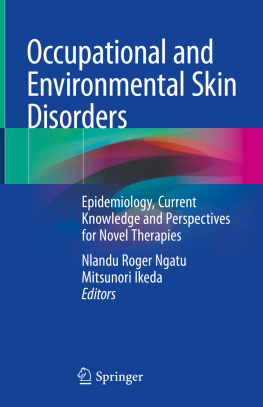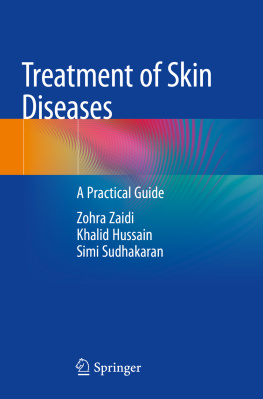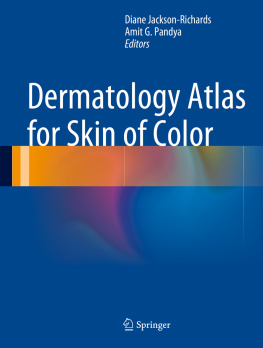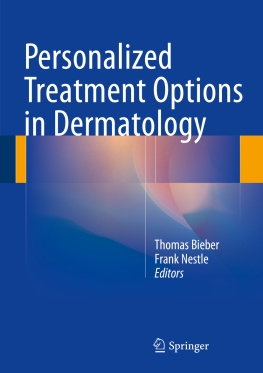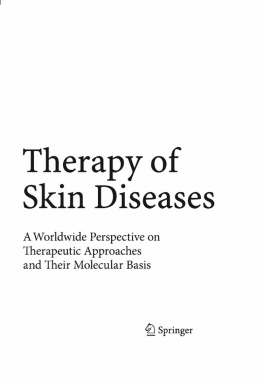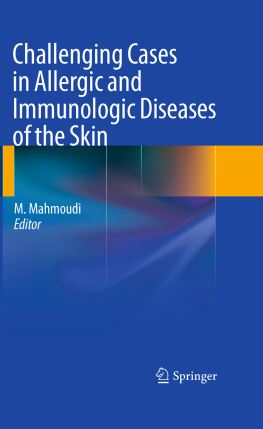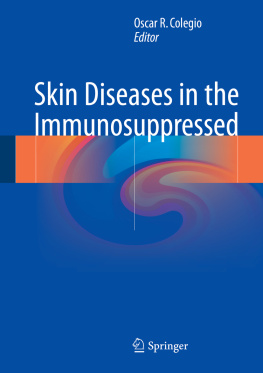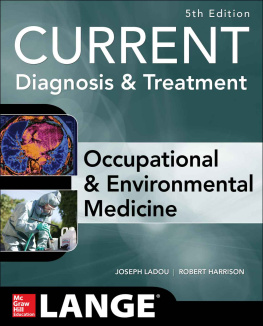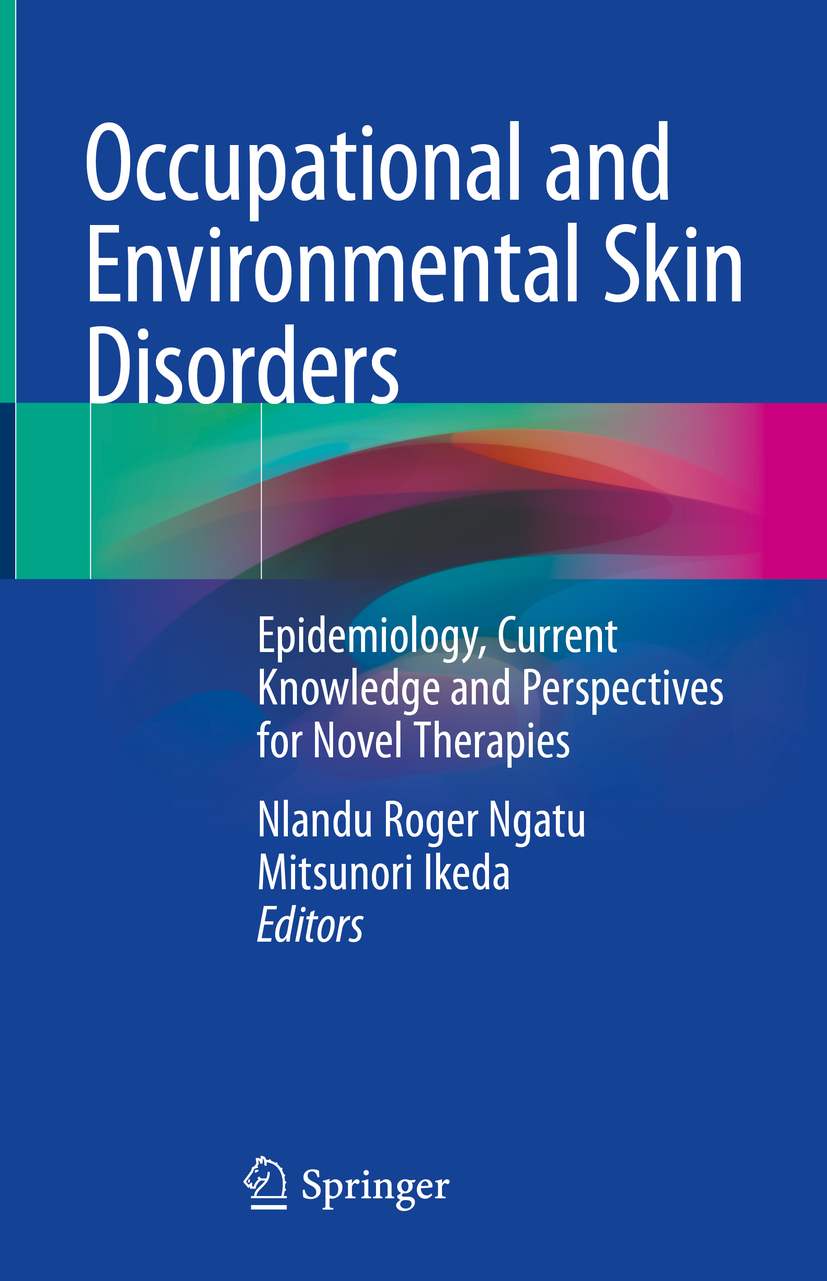Editors
Nlandu Roger Ngatu and Mitsunori Ikeda
Occupational and Environmental Skin Disorders Epidemiology, Current Knowledge and Perspectives for Novel Therapies
Editors
Nlandu Roger Ngatu
Graduate School of Medicine, International University of Health and Welfare (IUHW), Chiba, Japan
Graduate School of Public Health, International University of Health and Welfare (IUHW), Tokyo, Japan
Mitsunori Ikeda
Graduate School of Nursing, and Wellness and Longevity Center, University of Kochi, Kochi, Japan
ISBN 978-981-10-8757-8 e-ISBN 978-981-10-8758-5
https://doi.org/10.1007/978-981-10-8758-5
Library of Congress Control Number: 2018942330
Springer Nature Singapore Pte Ltd. 2018
This work is subject to copyright. All rights are reserved by the Publisher, whether the whole or part of the material is concerned, specifically the rights of translation, reprinting, reuse of illustrations, recitation, broadcasting, reproduction on microfilms or in any other physical way, and transmission or information storage and retrieval, electronic adaptation, computer software, or by similar or dissimilar methodology now known or hereafter developed.
The use of general descriptive names, registered names, trademarks, service marks, etc. in this publication does not imply, even in the absence of a specific statement, that such names are exempt from the relevant protective laws and regulations and therefore free for general use.
The publisher, the authors and the editors are safe to assume that the advice and information in this book are believed to be true and accurate at the date of publication. Neither the publisher nor the authors or the editors give a warranty, express or implied, with respect to the material contained herein or for any errors or omissions that may have been made. The publisher remains neutral with regard to jurisdictional claims in published maps and institutional affiliations.
This Springer imprint is published by the registered company Springer Nature Singapore Pte Ltd. part of Springer Nature
The registered company address is: 152 Beach Road, #21-01/04 Gateway East, Singapore 189721, Singapore
It has been almost 30 years since I was last treated by my mother for a skin disorder with the use of a plant-based remedy from her hometown in Congo. I knew this edible plant (V. amygdalina), given that its leaves were being used either as cough reliever or food in Africa. My first research projects as a Ph.D. candidate were related to experimental studies on animal models (and later on in human subjects) of eczematous disorders, skin conditions that are also induced by some factors found in the work and living environments. In recognition of their contribution to my current career as a researcher, I dedicate this work to my parents, Landu Pierre and Makiese Ngunda Berthe, and hope that many people, particularly those in rural Congo and Africa, will someday be relieved from common inflammatory skin disorders thanks to remedies from their rich nature. This work is also dedicated to my lovely wife, Yukimi Nakamura, for her wonderful support to my work, and to my son Kento-Landu Nakamura (Ken), of whom I am very proud for the progress he is making since he joined the university. I hope that, in near future, he will dedicate himself to serving humanity as a peace-loving scientist. Finally, this work is also dedicated to my parents-in-law, Masaru Nakamura and Yoshie Nakamura, for their wonderful support and care since I have been living in Japan.
Nlandu Roger Ngatu M.D., Ph.D.
Foreword
This book focuses on occupational and environmental skin diseases in terms of epidemiology, current knowledge, and perspectives for novel therapies. As the chairperson of the Allergy and Immunotoxicology Scientific Committee (SC) in the ICOH (International Commission on Occupational Health) and also the Vice- President of the Japanese Society for Hygiene (JSH), which aims to promote human health through integration of diverse factors associated with human life and the social and natural environment, it should be announced that this book is tremendously useful for researchers in the fields of occupational and environmental health as well as for regular citizens.
The skin is one of the gateways through which foreign bodies, biological and chemical agents enter the human body to cause conditions such as irritant, allergic, infectious skin disorders or cancers. It is almost permanently exposed to hazardous substances in the work and living environments.
This book covers several skin diseases caused by occupational and environmental hazards. The first part focuses on skin irritants, sensitizers, and carcinogens. Many novel chemical substances are developed and introduced in industrial work environments, and safety risk assessment of these newly developed hazardous substances is not vigorously performed. In particular, with respect to allergic substances, the relationship between human factorssuch as sensitivities, HLA typing, and exposure frequencies and dosesand chemical characteristics is not considered uniformly according to the dose-response strategy.
Next, this book focuses on the environmental and occupational eczematous skin diseases, such as atopic and occupational contact dermatitis, with a particular consideration of risk factors, inflammatory mechanisms, pathophysiology, and therapeutic strategies, including steroids and nonsteroid agents. Since recent insights in molecular-targeting therapies for cancers and immune-related diseases such as autoimmune disorders have achieved better outcomes for various diseases, strategies to be employed for the treatment of allergic skin diseases should consider a detailed understanding of immune modulation that occurs in the course of these conditions.
The last part of this book includes environmental fungal, and also seasonal and endemic skin disorders caused by arthropods, insects, and microorganisms. I addition, it provides very informative highlights on silica dust-exposure and autoimmune diseases, particularly scleroderma. These are also very important, and a comprehensive understanding of these diseases may lead to a successful treatment and cure of people suffering from conditions resulting from the health effects of these environmental agents and associated infections internationally, especially in the developing world, including Africa, Asia, and Central and South America.
I am currently serving as chairperson of the Allergy and Immunotoxicology SC in the ICOH, which usually has a special session with the Occupational and Environmental Dermatoses SC, since these two SCs are closely related with investigating diseases and providing biological insights in allergy and immune responses. Recently, our SC published an eBook entitled Allergy and Immunotoxicology in Occupational Health in 2017 with Springer Nature publisher in the series Current Topics in Environmental Health and Preventive Medicine organized by the JSH. We recommend that people with an interest in Occupational and Environmental Skin Diseases read the aforementioned eBook to gain a better overall understanding and recognition of this field, the support required by patients with occupational and environmental skin diseases, as well as to develop preventive procedures. As an aside, there are various autoimmune diseases caused by occupational and environmental hazards, for example, systemic sclerosis is caused by silica, and vinyl chloride exposure. I hope another book that thoroughly explores cutaneous autoimmune diseases caused by occupational and environmental substances will also be planned by authors who contributed to this special book.

